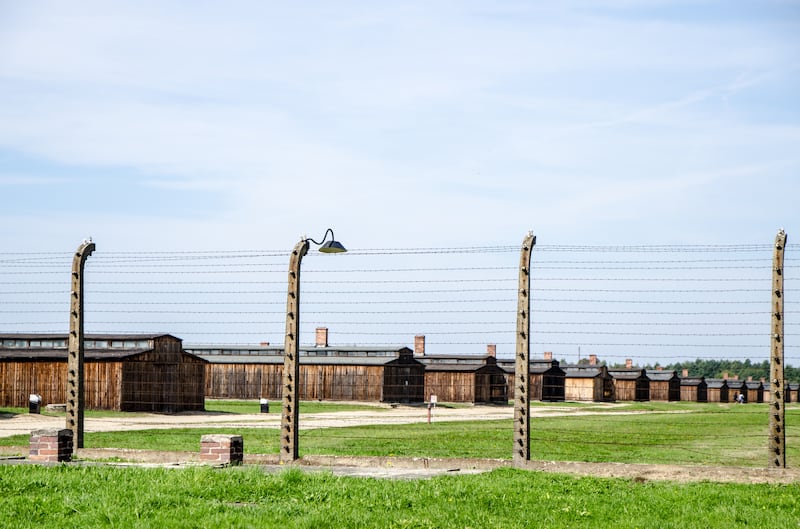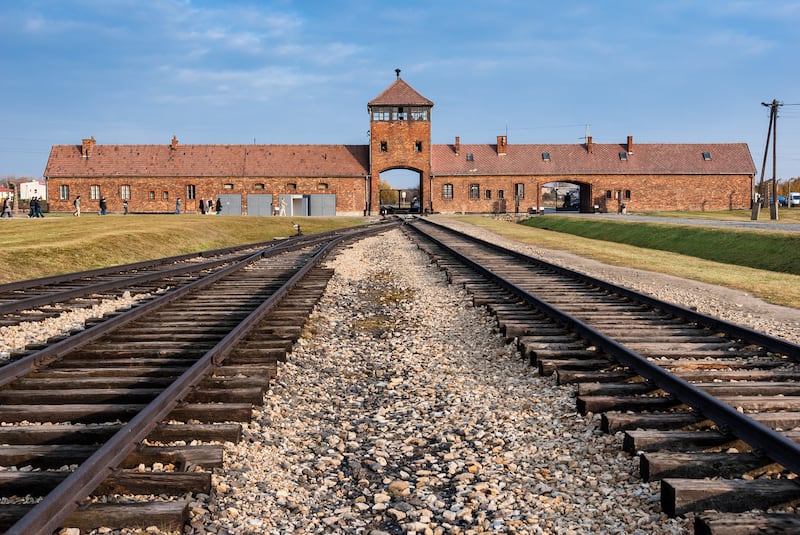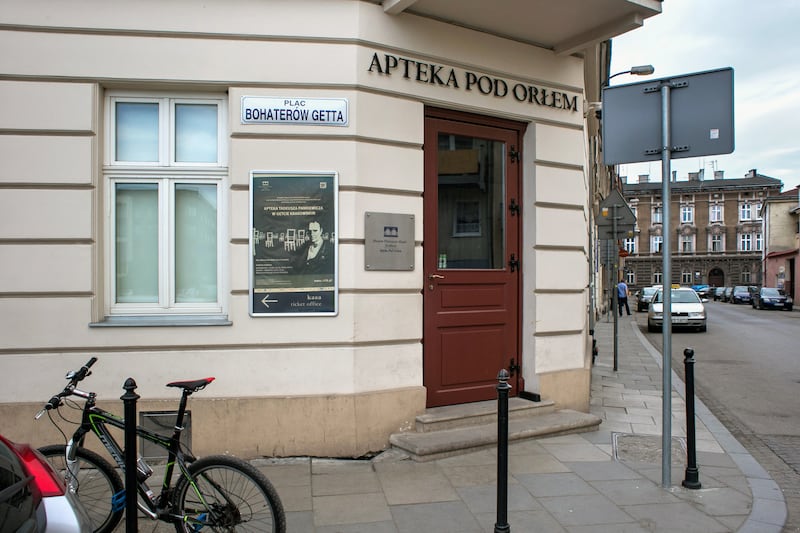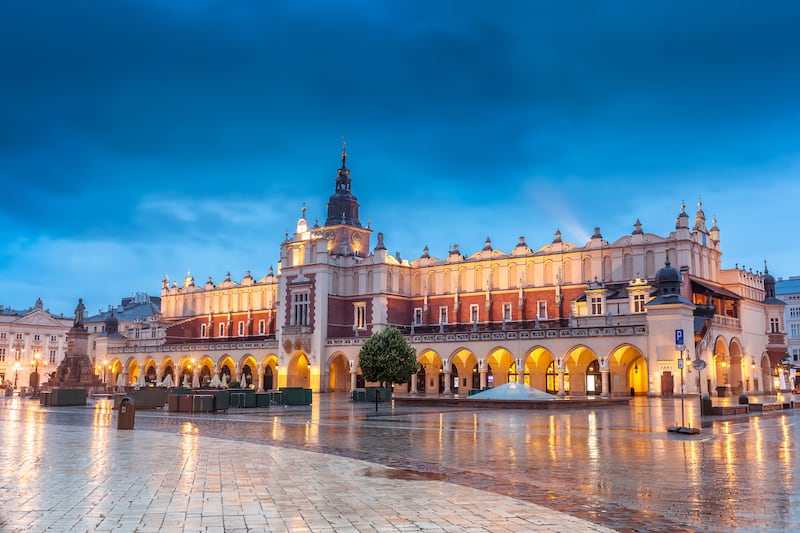Our guide at Auschwitz Birkenau in southern Poland points at a small wooden cart resting beside one of the camp buildings that remain on the vast, derelict site.
It would have been used for the usual kinds of things you might expect in a camp, he says – supplying goods to the kitchen or laundry. Also, moving dead bodies.
He tells us these might have been prisoners who died in this part of the camp during the night, with the job being allocated to their fellow inmates, probably teenagers. In winter, these boys would have been forced to pull and push their gruesome load along icy paths as fast as possible while wearing the wooden clogs the Nazis forced upon the people they incarcerated here. There was no salt on the paths because the guards chose to use human ashes for this purpose instead.

As with all of our three-hour tour of Auschwitz and its larger companion death camp Birkenau, our guide was matter of fact in his delivery of this grim vignette. It was just another grotesque detail in the absolute horror of what went on in this place, much of which is well known to us through representation in books and film. Seeing it though, the cart parked beside the hut as we stood on the path under a silently drab sky, the large scale of the camp stretched out ahead, provided a much more troubling level of appreciation of evil.
RM Block
It all started with words, our guide told us quietly as our tour ended. “It always starts with words.”
Auschwitz is located just over an hour’s drive from Krakow, or a trip of two or so hours by bus or train. As Poland’s second city, beautiful Krakow emerged from the second World War relatively unscathed in architectural terms, but not in matters of life and death. Auschwitz Birkenau, where more than one million people were murdered – most of them Jews – was located in Poland because the country had the biggest Jewish population in Europe before the war.

This means visitors to Krakow cannot only immerse themselves in its truly splendid multi-century charm but also, if they choose, get a compelling sense of how the city’s Jewish population lived and thrived before persecution descended in the late 1930s. The way such history is presented is respectful rather than mawkish, quietly acknowledging what happened rather than turning the other way. It never dominates the easy mood of this most vibrant city, with a visit to Auschwitz by no means key to getting the most out of a weekend here.
As first-time visitors with just two days to spare, it was helpful for us to split Krakow into three different parts: the exquisitely maintained old town with its churches and grand streets; Kazimierz, where the biggest Jewish population in the city had lived before the war; and the ghetto area of Podgorze, where they were forced to live under Nazi occupation before being transported to death camps. It’s easy to move between the three on foot or via the city’s excellent tram system. And if you get lost, a friendly local will always be on hand to help. (In our case, this local was a man who had lived close to our home in Dublin some 20 years ago – something which made us all smile as he recalled how everybody seemed to know everybody else in Ireland.)

We started in Podgorze, where at its peak, or evil depth, up to 20,000 Jews were packed into an area spanning no more than a couple of streets, having been forced out of their homes and had to relinquish their rights and property.
The Nazis took advantage of the captive labour supply in the ghetto to allow regime-friendly factories to establish there. One of these was Oskar Schindler’s Deutsche Emailwarenfabrik, or enamel factory, an operation that eventually led to the German industrialist saving an estimated 1,200 Jews from death. The factory, which featured prominently in Schindler’s List, is now open as a busy museum, featuring a permanent exhibition on life in Krakow under German occupation.
A lesser but nonetheless notable feature in Schindler’s List is the Eagle Pharmacy, a business run by a non-Jewish Pole on the corner of main square at the edge of the ghetto throughout the war years. The pharmacist, Tadeus Pankiewicz, refused to move his business when the ghetto was established and, by staying, he managed to act as witness and recorder of the Nazi regime there.

He was later recognised as having quietly helped many ghetto residents by supplying them with medicines or, in some cases, assisting escape. The pharmacy today is an excellent little museum, featuring multiple contemporaneous documents, audio recordings from ghetto residents and footage of the pharmacist himself.
It efficiently presents a perfect social history of a terrible time, allowing a window into real lives, now looking out on to what is known as Ghetto Heroes Square. Today, this unprepossessing space houses 33 iron and bronze chairs as a silent monument to those who lived and died here, or were transported from here to death camps.
From Podgorze, it’s today easy to cross the Vistula river by footbridge to Kazimierz, Krakow’s historic Jewish quarter, an area that was largely abandoned after the war. These days, it’s a place abuzz – lit up by history and culture and the hippest atmosphere in town. You might happen upon a sample sale by Polish designers, have a drink in a cosy livingroom-style bar housed in a former Jewish prayer house, or join the streets-long queue for Lody na Starowislnej, famed for offering the best ice cream in the city. And as with Podgorze, the Jewish history here is relatable and touchable. The Old Synagogue is the oldest in the city and allows an affecting insight into how Jewish life here before the war was happy, settled and prosperous.
Back in the old town, the main show is the glorious medieval Rynek Glowny, or Main Square, an enormous but elegant space painted in a gentle creamy and golden light on sunny evenings. Tourists and locals mix well here, strolling in the shadows of the grand town houses and churches that encircle it. At its centre is the Cloth Hall, a grand market hall that speaks to the city’s prosperous merchanting history and these days houses touristy stalls that stop just short of tacky.

Many of the square’s houses have been given over to retail or restaurants and it’s still possible to find decent food and value in the latter. Those seeking a more authentic Polish dining experience however, may choose the welcoming and cosy Starka in Kazimierz. Here, dumplings and crispy pork knuckle are on the menu, the latter useful as a backdrop visual for any future nightmares you might be planning if you end up not finishing.
Food like this requires post-prandial walks and this is where the seductive face of city life in Krakow really shows itself. On our visit, blooming lilac trees abounded in the Planty, a delightful strip of city park that wraps itself around the old town where medieval city walls once stood. Notably, walking here felt safe both in daytime and in the late evenings, again with locals enjoying the calm in the shadow of the imposing Wawel Castle as much as tourists. The fact that the castle was both the official base and family home of Hitler’s man in Poland, Hans Frank (hanged after the Nuremberg Trials), is just another bit of fascinating history in a city that brims with it without ever allowing it to overwhelm.















